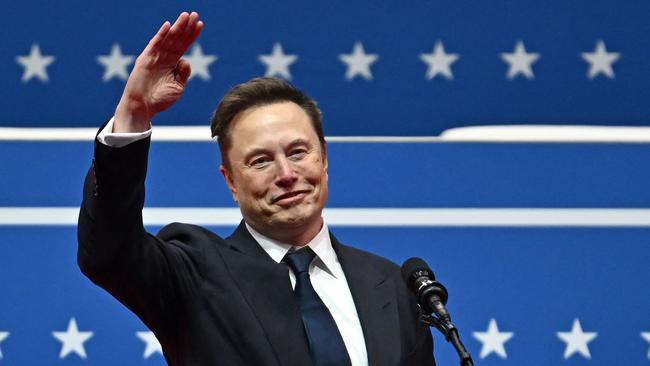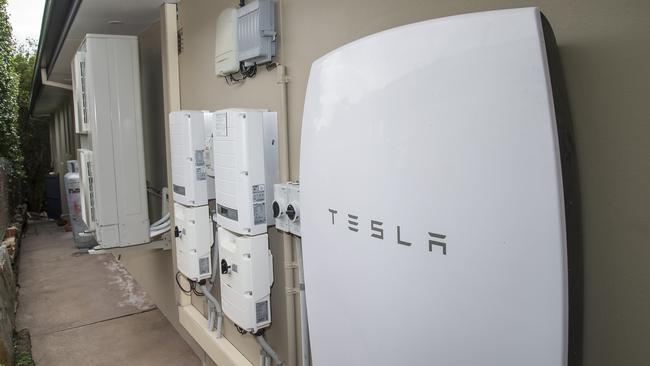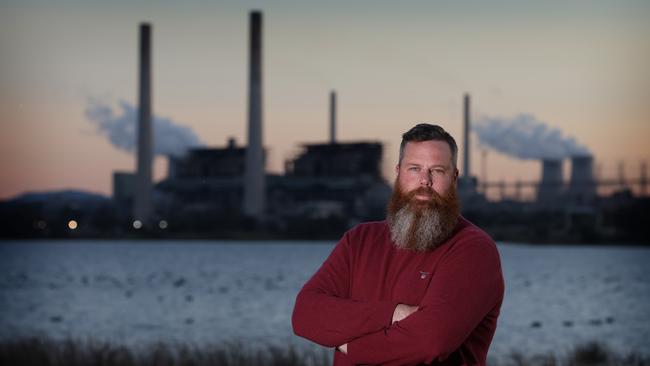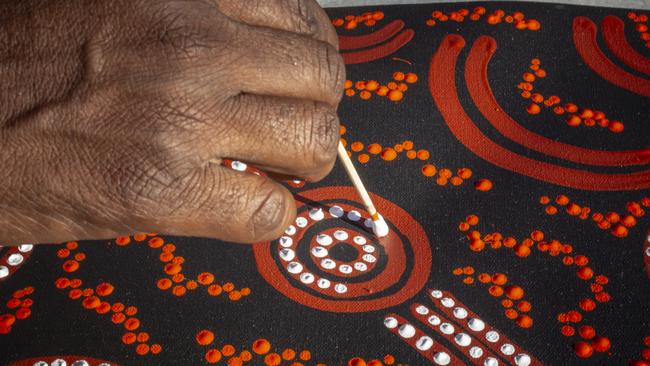Vikki Campion: Batteries for well-off an insult to battlers
Under Labor, the Australian working classes will cough up nearly $5bn in the near future to subsidise those owning multimillion-dollar homes to collect shiny new toys made by Elon Musk, writes Vikki Campion.
Opinion
Don't miss out on the headlines from Opinion. Followed categories will be added to My News.
It was not enough to help Elon Musk sell Teslas, now Prime Minister Anthony Albanese is offering a discount on his batteries. What further largesse could he offer the world’s richest person, courtesy of the Australian taxpayer? Looking at the demographic he is pitching to, it could well be knocking a few grand off their SpaceX flight.
In a cost-of-living election, the polls are up for a Labor Party taxing the poor to pamper the rich.
The Albanese Labor Government’s battery policy announced this week shows they are helplessly addicted to welfare for the wealthy and sending billions to their recently fallen angel, Mr Musk.
Not only will working-class families be slugged $2.3 billion for the battery subsidy, but they will also have to pay a higher cost for their daily power.
Similarly, the EV policy hurts the driver in the 10-year-old, second-hand Holden twice. First with the $1.7bn gift to help the wealthy avoid paying luxury car tax on their brand new Tesla, and again when the EV motorists contribute nothing to road repair by escaping $470m in fuel excise tax.

When Labor Hunter MP Dan Repacholi announced the battery policy on his socials, he posted a photo of two Tesla power walls with a combined value of about $30,000 of which the ALP is offering a $4k discount per home.
This means a Cessnock family must firstly own their own house, then have a lazy $26,000 laying around for the batteries. This doesn’t include the outlay for rooftop solar, for which regional buyers were quoted a minimum of $11,000 this week for an 8kw set up by a reputable installer, which makes the bill to prepurchase power about $31,000.

That’s a very small street in Cessnock with that kind of spare pocket money.
This policy is not for mortgagees in Morisset struggling to pay for eggs and bread; this is to shore up votes of wealthy homeowners in inner urban Labor seats who have undergone metamorphosis and are emerging from their voting chrysalis as beautiful Green butterflies.
While the wealthy get luxury cars, battery discounts and untested electricity bill relief, the pensioners and working classes, who actually do need help, will see their federal energy bill subsidy halve this year, and then drop to zero in 2026/27, according to the forwards in Jim Chalmers’ March budget.
Renters and apartment owners can’t put a Tesla power wall on their balcony, or solar on their roof, or charge an EV in their private garage.

These are policies that exclusively work for people whom the cost of living crisis has seen them forced from a $80 bottles of Champagne to the $40 bracket.
For the rest of us, the cost of power we draw from the grid will be higher as there will presumably be less usage by all households with batteries, driving up the fixed transmission and generation costs which adds to the price of the bill stack. Those with batteries, unless they have an off-grid set up, will still need mains power.
It’s a good thing Mr Repacholi had heard people screaming about their power bills, but isn’t it a shame people are worried about affording to keep their lights on in an energy-rich region like the Hunter, whose black coal keeps the economy booming in China?
And why? Because of the billions more going into the subsidy mine at Parliament House such as the some $3.6 billion budgeted for this year to Environment and Energy Partnership Payments for projects such as the hydrogen energy supply chain project, carbon capture and storage, the “community banks solar program”, the National Hydrogen Technology skills training centre and the temporary cap on the price of coal.
Or the secret billions going into the Capacity Investment Scheme, which pays wind and solar factories whether they provide energy to the grid or not, the only part of the budget where it is acceptable to replace a dollar figure with a “NFP” (not for publication).
The PM claims you will have saved $1100 per year or $7700 over the life of your battery with the scheme.
Based on a replaced battery in seven years, you will still be out of pocket, and that doesn’t take into account the cost of installing, maintaining and replacing your rooftop solar panels, or the increased cost of electricity you draw from the grid, that you will still need on cloudy days.
Meanwhile, the $470m in fuel excise avoidance, and the $1.795 billion in foregone revenue for the electric car discount over six years from 22/23, combined with the $2.3bn battery subsidy, means the Australian working classes are coughing up nearly $5bn in the near future to subsidise those who own multimillion-dollar homes to collect shiny new toys made by Mr Musk.
RULES WILL GIVE ACTIVISTS ARTISTIC LICENSE TO CLOSE OFF AUSTRALIA
Australians overwhelmingly voted No to the Voice, so why does the Canberra bureaucracy behave as if the opposite occurred?
Native Title claims that could change where you live, work, fish or camp can now be shaped by how a bureaucrat felt about a painting one day.
The Australian Law Reform Commission, in reviewing the future acts regime in the Native Title Act, has opened the way for individuals to send in an “artwork” as a formal submission to its reform discussion paper until December 2025.
How on earth do you identify “aspects of the future acts regime you think work well” with a painting?
How do you provide “ideas about how to reform the future acts regime” or show “what an ideal future acts regime would look like” as the issues paper requests, with what, a still life of an apple?
This move leaves everything open to interpretation, allowing submissions “without answering specific questions”.

How do you form a concrete argument to change a policy as complicated as Native Title, with brushstrokes as subjective as music, and how do you evaluate it with the consistency that Native Title deserves?
Does a biro sketch of a landscape get the same weight as a watercolour or a dot painting?
The Terms of Reference ask the Law Commission to find reform in native title, “as well as ways to make it work more efficiently” and “support native title holders so they can effectively engage with the future acts regime, as well as supporting fair negotiation and collaboration between native title holders and proponent”.
Didn’t we have a referendum that all Australians were equal?
This is the frivolity that has been allowed to thrive in the Albanese government’s public service, where legal bureaucrats will be given more than a year to ingest art, to determine how to create changes to Native Title.
LIFTER
David Janetzki, Queensland’s treasurer, for scrapping Labor’s intermittent power targets and extending the life of affordable hydrocarbons.
LIFTER
Hordes of Greens staffers and MPs who lecture us on emissions yet happily hopped on the pointy end of the plane to the National Press Club in Canberra to watch dear leader Adam Bandt explain how he would bankrupt the country while feasting on snapper or a vegan option: onion served on a bed of chickpeas.





